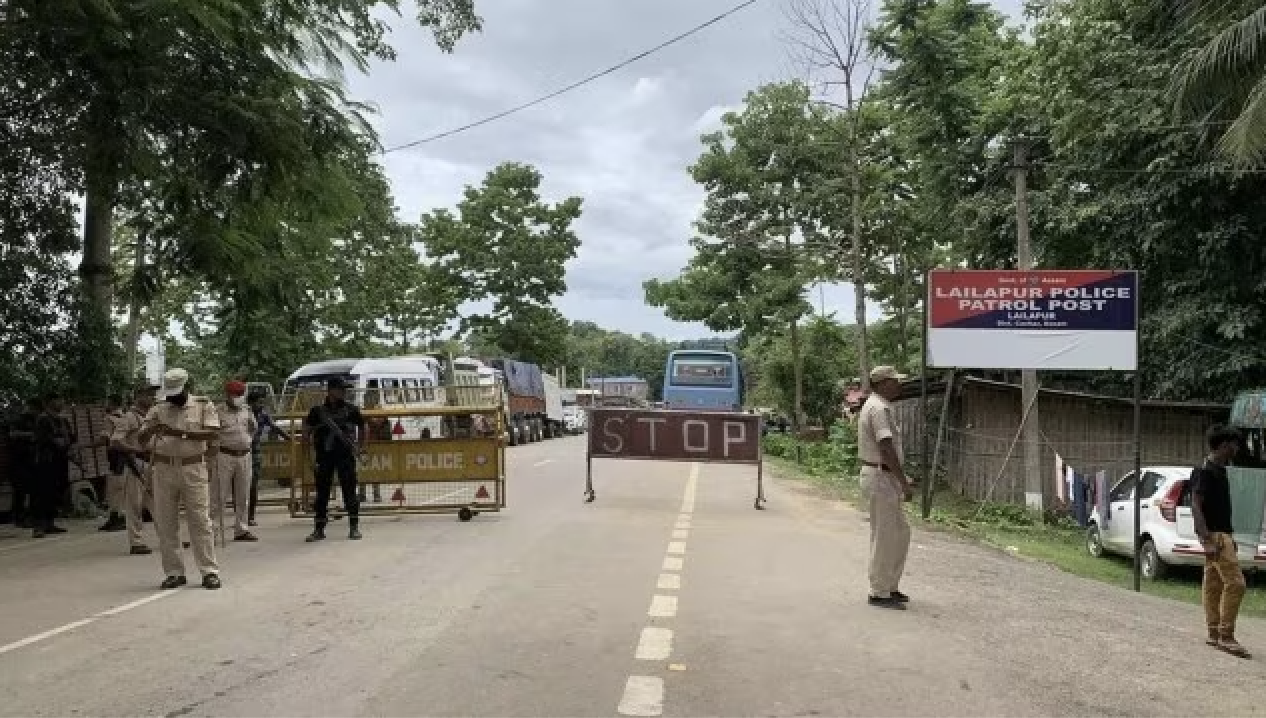Appendix C
Sewa International: Service With An Ideological Edge
For those attempting to understand the operations of the RSS, especially the role of foreign funds in its work, an examination of the role of its Sewa Vibhag is critical. Within the Sewa Vibhag, the Sewa Bharati and the Sewa International are two of the most critical organizations. Their criticality as the Sangh organizations lies in the fact that both are excellent examples of the precise way in which the Sangh’s service work is organized, as well as key organizations in coordinating foreign funds for these service projects. Accordingly, this appendix is organized into two broad sections:
C.1 Linking the Sewa Institutions: The RSS. Sewa International and IDRF
At the very outset, Sewa International is a Sangh organization. Its historical connection to the Sangh is visible from the fact that in older Sangh literature, the address of Sewa International is the same as that of the RSS headquarters in Delhi.[99] Further, this fact is established time and again in much Sangh literature that describes the Sangh’s Sewa karya (Service work). In its mission statement Sewa International characterizes itself as “an umbrella for more than 2000 projects and programs all over India” overseeing “more than 50000 Swayamsevaks (volunteers) involved in running 76 types of activities.[100] Similarly, Sewa Disha, the Sangh’s Sewa Vibhag report introduces Sewa International as follows:
So also, the RSS website documents its links with its operations abroad, “in over 100 countries”:
Little Service, More Hinduization
As we argued in section 2.1 of the main report, the basic focus of Sewa activity as coordinated by Sewa International is the various community activities taken on by the Sangh and the resulting spread of Sangh philosophy in different areas. [107] This clarity – where “development” is merely the pretext for sectarian ideological training, is expounded in detail by H.S. Sheshadri, the ex-General Secretary of the RSS:
The key phrase in the above passage is “consolidation of Hindu society” – indicating that there are many parts of Indian society that are at a distance from what the RSS defines as Hindu society. It is to “convert” these people who are “insufficiently Hindu”, that sewa karya is a cover for. For instance, “Hindu consolidation”’ very often happens through celebrating Hindu festivals such as Holi, Raksha Bandhan, Yugadi, Sankranti—all festivals described by the VHP, as those promoting Hindu consciousness and ‘national integration. [109]
C.2.1 Less Service, More Hinduization
The centrality of consolidation work within sewa karya is amply visible in the following description where a ‘social service’ project in the slums often leads to the establishment of an RSS shakha (an RSS cell) in the locality:
Clearly, the flag, the prayer and the Shakha dominate the activities of Sewa International. In noting this trajectory of work, where a theological core is what constitutes the work of Sewa International, what is critical to understand is that all of this work is carried out in the name of “development.” Most Sewa International projects are defined in terms of “rural development” or “tribal education” or some similar “developmental” category. In other words, there is a clear effort to mislead people who would otherwise be favorably disposed to developmental activity. Development with a Hindutva twist is mostly Hindutva and very little development.
There is another issue that bears some deliberation: If “Hindu consolidation” is being carried out in the name of development, who is it that the Sangh seeks to “consolidate”? As we noted above, there are large segments of the Indian polity that have little or nothing to do with Hindutva. This not only includes the Muslims and the Christians, two large minority groups in India but also others who are sufficiently outside of Hindu fold – the Dalits (untouchables) and the adivasis (the tribals). Dalits, for centuries considered outside the caste Hindu order, do not easily accept efforts to integrate them into Hinduism because they clearly understand that it would mean the continued subjugation by the caste hierarchy. Tribals (adivasis) similarly, have also traditionally been outside the hierarchy of caste Hinduism and have insisted for generations on a separate identity outside of upper caste Hinduism. Needless to say, the core of Hindutva ideology is a very clearly marked upper caste doctrine that seeks to keep in place many of the traditional and regressive hierarchies of caste Hindu society. While these four groups are the Sangh targets through Sewa work for “consolidation” into a Hindu order, it is equally true that large numbers of those who are statistically identified as Hindus do not necessarily have a consolidated Hindu identity – that is they are not mobilized into action by their Hindu identity. Presented below are three cases of Sewa International’s work, which they present as good textbook examples of their work. As usual, all three are categorized as “development” work.
C 2.2 Hazratpur Becomes Shivaji Nagar: The Essential Limits of Development
Hazratpur is, like many other Indian villages, largely poor, with both a Hindu and a Muslim population living in close quarters, just a small distance away from the town of Bulandshahar in UP. Like many other such villages, a large part of the poorer Hindus in the village are not upper caste and are thus traditionally not part of the Hindutva movement. So also, like so many other villages and towns in the region, the names of areas reflect the complex and rich history of the region. One town may have a tenth century Hindu king’s name, while the next village may be named after a local Muslim saint. Hazratpur is an excellent example of the latter. There are few demarcations and this pattern of complex intermixing is the rule.
Here is an extract from the Sewa International propaganda material on ‘rural development’ that reflects their efforts to intervene in this multi-religious community [111] :
Many different aspects of this extract need to be highlighted:
Similar incidents with Christians are also highlighted in the Sewa International literature.
C.2.3 Religious Conversion as Development
Speaking of a poor neighborhood (basti), they write [112]:
The modus operandi is similar with the difference that the target for consolidation is a group of poor Christians. In other words, development in this case is in the main religious conversion work. The process of getting to this is similar to the example above, where Hindutva institutions are constructed and certain Hindu symbols are highlighted.
C.2.4 Fixing the Hindu Order: Consolidation of Caste
But as we said, it is more than the Christians and Muslims who are targets for consolidation. Efforts to draw Dalits and tribals into a narrow Hinduism are also on. Dalits and tribals as subjects of consolidation are to be integrated into the Hindu order as lowest within the ritual hierarchy:
The symbolic positioning of the RSS supremo as upper caste (god equivalent) is embarrassingly clear. Sri Ram – the upper caste (Kshatriya) god — embracing the “lowly” Guha as a metaphor for a contemporary tilak ceremony (normally used as a welcome/acceptance ritual) leaves no doubts as to where in the order dalits and tribals fit within Hindutva.
What must be noted in summary is the significant levels of instrumentality in the way Sewa International projects are carried out. Using the cover of development, projects are undertaken where the most significant objective has got little to do with economic or social empowerment, and has everything to do with consolidation of a specific Hindu identity that is suited to the project of Hindutva. It would not be wrong to say that the integration-consolidation work is actually well positioned not just to spread a specific and narrow Hinduism, but also to reproduce traditionally oppressive hierarchies. There is little or no “development” work but mostly the building up of religious spaces such as temples and RSS institutions such as Vidya Mandirs or Sishu Vihars. Sewa International, yet again, like IDRF, named innocuously as merely a Service organization is surely more ideology and less service.
This story first appeared in outlookindia.com






